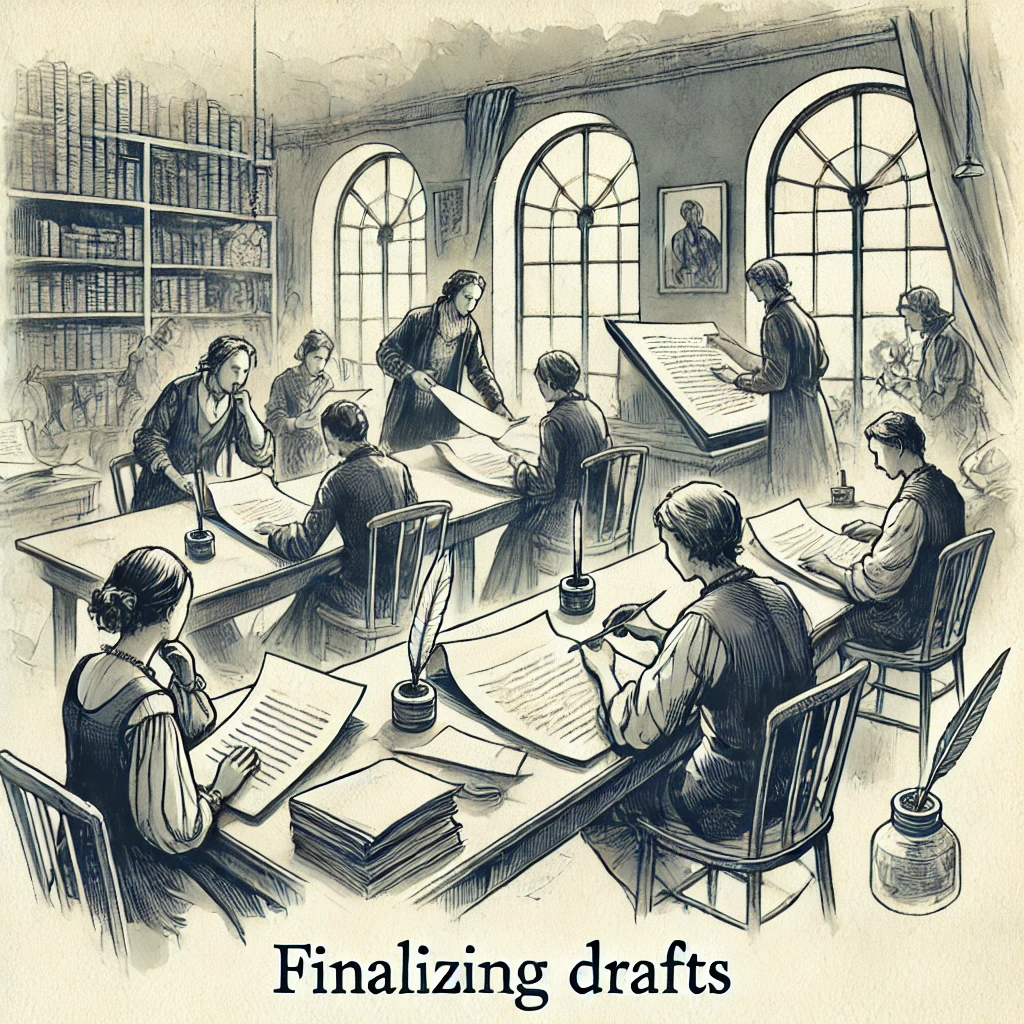Editing and Revising, Finalizing Drafts, and Reflective Writing

Editing and Revising: Learn to Edit and Revise Your Writing for Clarity and Impact

Definition:
- Editing: The process of reviewing and correcting your writing to improve accuracy, readability, and coherence. It involves checking for grammar, punctuation, spelling errors, and ensuring proper sentence structure.
- Revising: The process of reviewing and modifying your writing to improve the content, organization, and overall impact. It involves making changes to the ideas, arguments, and structure of the text to enhance clarity and effectiveness.
Importance:
- Editing and revising are crucial steps in the writing process that help you refine your work, ensuring it is clear, coherent, and impactful. These steps transform a rough draft into a polished piece of writing.
How to Edit and Revise
Step 1: Take a Break
After completing your draft, take a break before editing and revising. This allows you to approach your work with fresh eyes.
Step 2: Read Aloud
Reading your work aloud helps you catch errors and awkward phrasing that you might miss when reading silently.
Step 3: Check for Clarity
Ensure your ideas are clearly expressed and easy to understand. Look for sentences that are vague or confusing and revise them for clarity.
Step 4: Focus on Structure
Check the organization of your paragraphs and overall flow of the text. Ensure each paragraph has a clear main idea and that your ideas progress logically.
Step 5: Improve Word Choice
Enhance your writing by choosing precise and vivid words. Avoid repetition and unnecessary words.
Step 6: Correct Grammar and Punctuation
Review your writing for grammar, punctuation, and spelling errors. Use tools like grammar checkers and dictionaries to assist you.
Step 7: Seek Feedback
Ask a peer or teacher to review your work and provide feedback. Use their suggestions to make further revisions.
Example
- Initial Sentence: “The cat sat on the mat, it was very happy and it purred loudly.”
- Edited and Revised Sentence: “The cat sat contentedly on the mat, purring loudly with happiness.”
Finalizing Drafts: Produce Polished Final Drafts Ready for Submission

Definition:
- Finalizing drafts involves completing the final version of your writing, ensuring it is polished, error-free, and ready for submission.
Importance:
- Producing a polished final draft is essential for presenting your work professionally. It demonstrates attention to detail, thoroughness, and commitment to quality.
How to Finalize Drafts
Step 1: Review Feedback
Incorporate feedback from peers, teachers, or mentors into your final draft. Make any necessary revisions based on their suggestions.
Step 2: Conduct a Final Read-Through
Read through your draft one last time to catch any remaining errors or inconsistencies. Focus on the overall flow and coherence of the text.
Step 3: Format Properly
Ensure your document is formatted according to the required guidelines (e.g., MLA, APA, Chicago). Check for proper font, spacing, margins, and headings.
Step 4: Proofread
Carefully proofread your work to catch any minor errors, such as typos or missing punctuation.
Step 5: Prepare for Submission
Make sure your document is saved in the appropriate format (e.g., PDF, Word) and is ready for submission. Attach any necessary appendices or supplementary materials.
Example
- Before Finalizing: “After revising and editing the document, the final draft is almost ready to be submitted.”
- Final Draft: “After thorough revision and editing, the final draft is polished and ready for submission.”
Reflective Writing: Reflect on Your Writing Process and Progress

Definition:
- Reflective writing involves thinking critically about your writing process, identifying strengths and areas for improvement, and setting goals for future writing tasks.
Importance:
- Reflective writing helps you understand your growth as a writer, recognize patterns in your writing habits, and develop strategies for continuous improvement. It fosters self-awareness and encourages a proactive approach to learning.
How to Reflect on Your Writing
Step 1: Analyze Your Process
Think about how you approached the writing task. What strategies worked well? What challenges did you encounter?
Step 2: Identify Strengths and Weaknesses
Reflect on what you did well and what you need to improve. Consider aspects such as idea development, organization, grammar, and style.
Step 3: Set Goals
Based on your reflection, set specific goals for your next writing task. These goals could include improving sentence variety, using more vivid language, or reducing grammar errors.
Step 4: Document Your Reflection
Write a reflective journal or essay summarizing your thoughts. Include specific examples from your writing to illustrate your points.
Example
- Reflective Entry: “While writing my research paper, I found that outlining my main points before drafting helped me stay organized. However, I struggled with maintaining a consistent tone throughout the paper. For my next assignment, I will focus on using transitional phrases to improve the flow between paragraphs.”
Learning activities
Editing and Revising Workshop (20 minutes)
Objective: Practice editing and revising writing.
Instructions:
- Draft Review: Review your draft from Day 1.
- Editing Checklist: Use an editing checklist to make improvements.
- Final Draft: Write a final draft incorporating all revisions.
- Class Presentation: Present your final draft to the class and explain the changes you made.

Reflective Writing Task (20 minutes)
Objective: Reflect on your writing process and progress.
Instructions:
- Reflection: Write a reflection on what you learned about writing.
- Goals: Set goals for how you will continue to improve your writing.
- Share: Share your reflection with a classmate and discuss your goals.

Additional Resources:
– 30 Writing Tips to Make Writing Easier
– Online Writing
